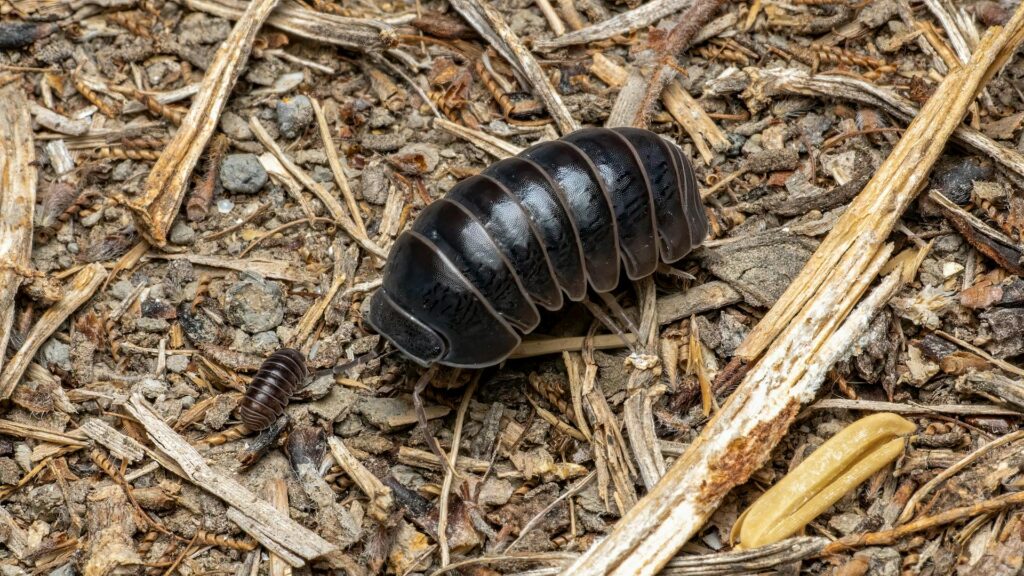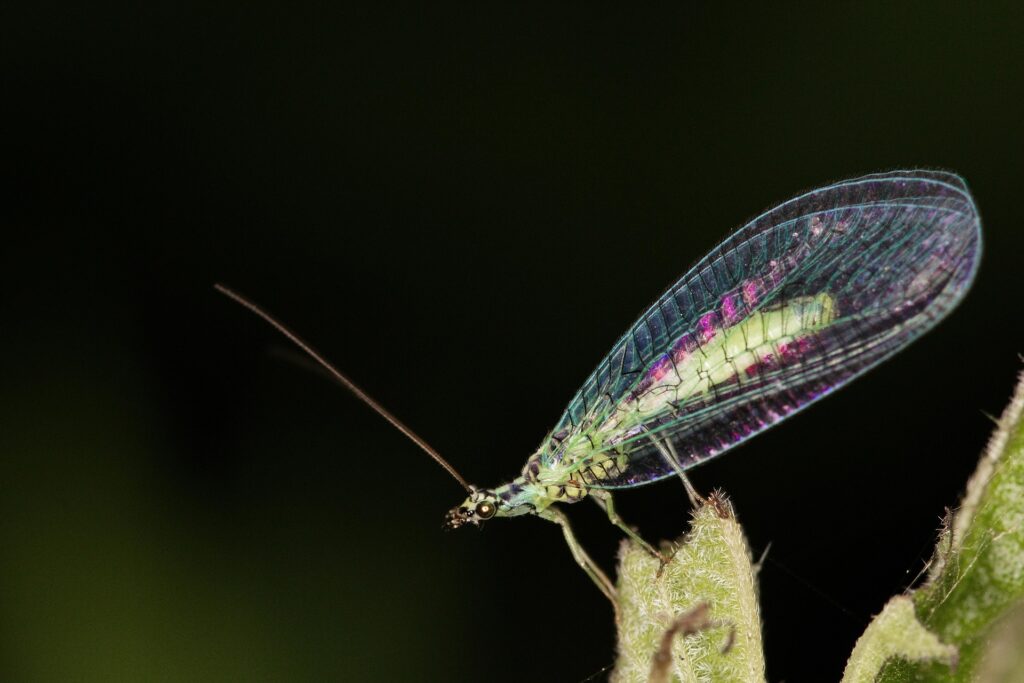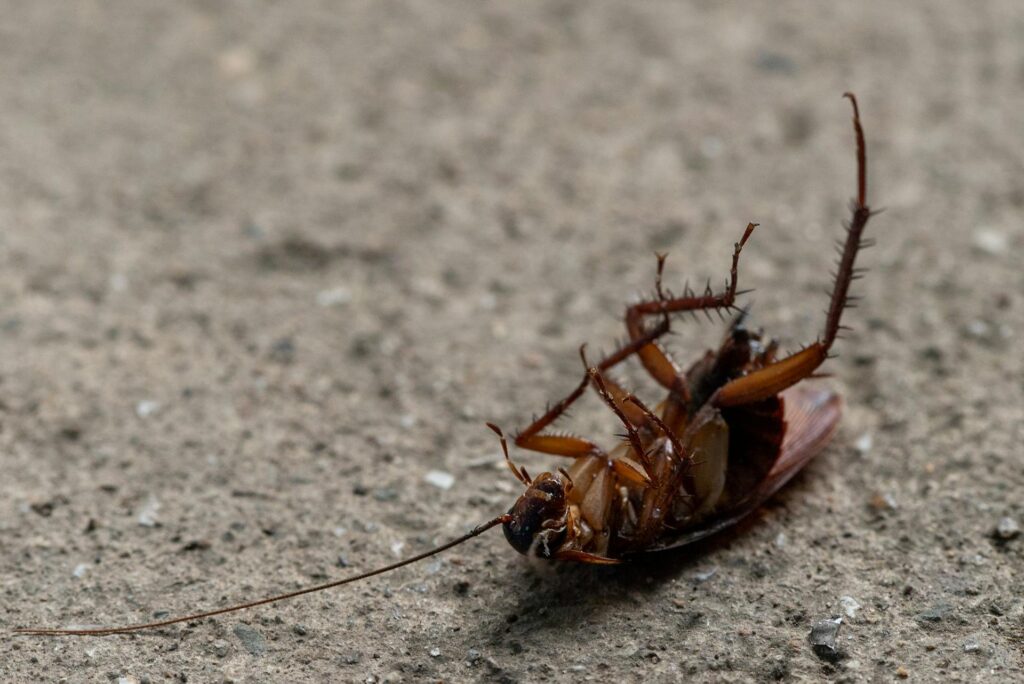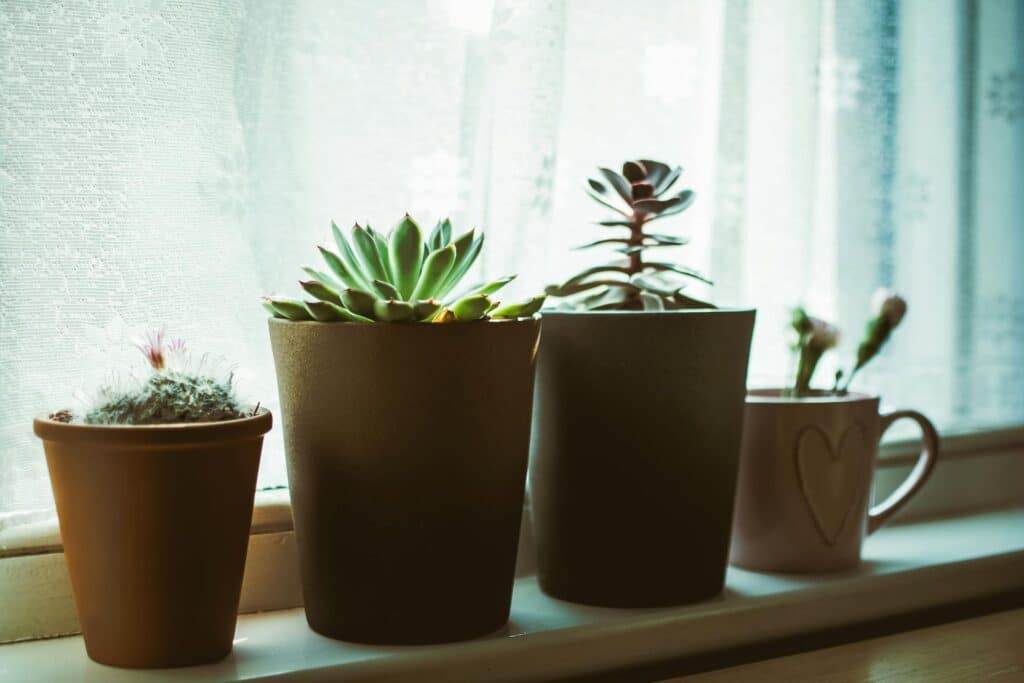If you’ve spotted a cockroach scurrying across your floor, you might be wondering exactly what type of unwelcome visitor has entered your home. While there are about 4,500 cockroach species worldwide, German and American cockroaches are the two most commonly encountered in North American homes. These persistent pests differ significantly in their appearance, behavior, and the challenges they present for control. Understanding these differences is the first step toward effective management and prevention.
What are German cockroaches?
German cockroaches (Blattella germanica) are small but notoriously problematic indoor pests, considered among the most common and difficult-to-control cockroach species worldwide. Despite their name, they’re believed to have originated in Southeast Asia rather than Germany. These insects are exclusively indoor pests in most regions of North America, rarely surviving outdoors except in warm, humid climates.
They’re particularly fond of kitchens and bathrooms due to the readily available food, water, and numerous hiding places these areas provide. German cockroaches are known for their remarkable reproductive capacity, with females producing more eggs at a faster rate than any other cockroach species. They’re also highly adaptable, developing resistance to many pesticides over time. Their small size allows them to hide in tiny cracks and crevices, while their preference for remaining close to food and water sources makes them frequent kitchen inhabitants.
What are American cockroaches?
American cockroaches (Periplaneta americana), despite their name, likely originated in Africa before spreading globally via shipping and trade. These large insects, often called palmetto bugs or water bugs in various regions, are primarily outdoor cockroaches that occasionally venture indoors. They prefer warm, humid environments and are commonly found in sewers, drain systems, basements, and steam tunnels.
Unlike their German counterparts, American cockroaches don’t typically establish permanent indoor infestations except in large commercial buildings with suitable conditions. They’re attracted to decaying organic matter and often enter homes seeking water during dry periods or warmth during colder months. While less prolific breeders than German cockroaches, their significantly larger size makes them more noticeable and alarming when encountered. They’re excellent fliers, particularly in warm conditions, and can quickly move from outdoor harborage sites into buildings through small openings around doors, windows, and utility penetrations.
What do German cockroaches look like?
German cockroaches are relatively small cockroaches, typically measuring about ½ to ⅝ inch long as adults. Their most distinctive feature is a pair of dark, parallel stripes running lengthwise on their pronotum (the shield-like structure behind the head), which provides an easy visual identifier compared to other species. They have a uniformly light brown to tan coloration that’s sometimes described as having a slightly olive or yellowish tint.
Unlike larger cockroach species, German cockroaches rarely fly and prefer to run rapidly when disturbed. Both males and females have wings approximately the same length as their bodies, though they seldom use them. Nymphs (immature stages) resemble adults but are smaller, darker in color, and lack fully developed wings. Instead, they display prominent dark stripes running the length of their bodies. Another identifying characteristic is their incredibly fast movement—when lights are turned on, they rapidly scatter toward dark hiding places.
What do American cockroaches look like?
American cockroaches are significantly larger than their German counterparts, measuring approximately 1½ to 2 inches long as adults, making them among the largest common household cockroach species. They have a distinctive reddish-brown to mahogany color with a yellowish figure-eight or oval-like pattern on the pronotum (the shield-like area behind the head). Both males and females possess fully developed wings that extend slightly beyond their bodies, and unlike German cockroaches, they are capable fliers, particularly in warm conditions.
American cockroaches have long, slender antennae typically exceeding their body length, and long legs adapted for rapid movement. Nymphs resemble adults but are smaller, wingless, and often have a more uniformly grayish-brown coloration until they mature. Their substantial size combined with their reddish coloration makes American cockroaches relatively easy to identify even from a distance, and they don’t move quite as frantically as German cockroaches when exposed to light.
What are some main differences between German cockroaches and American cockroaches?
German and American cockroaches differ significantly across several key characteristics:
- Size and identifying features: German cockroaches are much smaller (½ to ⅝ inch) with two parallel dark stripes behind their head, while American cockroaches are substantially larger (1½ to 2 inches) with a yellowish figure-eight pattern on their pronotum.
- Habitat preferences: German cockroaches are almost exclusively indoor pests thriving in kitchens and bathrooms, whereas American cockroaches primarily live outdoors or in sewers, basements, and crawl spaces.
- Entry patterns: German cockroaches establish permanent indoor populations, while American cockroaches typically enter homes only occasionally as invaders from outdoor harborages.
- Reproductive differences: German cockroaches breed exponentially faster with females carrying egg cases until just before hatching, while American cockroaches reproduce more slowly and deposit egg cases in hidden locations.
- Flight capabilities: German cockroaches rarely fly despite having wings, while American cockroaches are capable fliers and may use flight to access different areas
- Infestation significance: German cockroach sightings typically indicate serious. established infestations since they prefer to remain hidden, while American cockroach sightings might represent occasional invaders rather than established indoor populations.
- Control implications: The differences in behavior and habitat preferences mean each species requires distinct prevention and treatment strategies for effective management.
What are more dangerous: German cockroaches or American cockroaches?
From a public health and property damage perspective, German cockroaches generally pose the greater risk despite their smaller size. Their propensity to infest kitchens and food preparation areas increases their potential to spread pathogens to food surfaces. German cockroaches reproduce exponentially faster than American cockroaches, allowing populations to grow rapidly into serious infestations that are difficult to control.
They’re known carriers of various bacteria including Salmonella and E. coli, and their shed skins and fecal matter contain powerful allergens that can trigger asthma attacks, especially in children. Their exclusively indoor lifestyle means continuous exposure to humans. American cockroaches, while potentially carrying similar pathogens, typically spend less time in direct contact with food preparation areas and reproduce more slowly.
However, their tendency to frequent sewers before entering homes means they can potentially track different pathogens and bacteria. Both species can contaminate food and surfaces, trigger allergies, and cause psychological distress, but German cockroaches’ rapid reproduction rate and kitchen-dwelling habits generally make them the more concerning health risk.
Lifecycle of a German cockroach
The German cockroach lifecycle exemplifies why this species is such a persistent pest. It begins when a female produces an ootheca (egg case) containing 30-40 eggs—significantly more than most cockroach species. Unlike other cockroaches, German cockroach females carry this egg case externally until just before hatching, protecting it from predators and harsh conditions. The eggs typically hatch after about 28 days, though the female may drop the case slightly earlier if stressed.
Newly hatched nymphs undergo incomplete metamorphosis, progressing through 5-7 molts over approximately 6-7 weeks before reaching adulthood. These nymphs don’t disperse far, remaining close to harborage areas with reliable food and water. Once mature, adults live about 100-200 days, with females potentially producing 4-8 egg cases during their lifetime.
This extraordinary reproductive capacity means a single female can theoretically give rise to over 30,000 descendants in a year under ideal conditions. The entire lifecycle from egg to reproducing adult can be completed in as little as 100 days, allowing for multiple overlapping generations and exponential population growth in a relatively short timeframe.
Lifecycle of an American cockroach
The American cockroach lifecycle progresses more slowly than that of German cockroaches but still demonstrates remarkable resilience. The process begins when female American cockroaches produce dark, barrel-shaped oothecae (egg cases), each containing 14-16 eggs. Unlike German cockroaches, American cockroach females deposit these egg cases in hidden, protected areas shortly after formation, cementing them to surfaces using secretions from their mouth.
Each female typically produces 6-14 egg cases throughout her lifetime. The eggs develop for approximately 6-8 weeks before hatching, emerging as nymphs that resemble small, wingless versions of adults. These nymphs undergo gradual metamorphosis, passing through 10-13 molting stages over a period of 6-20 months depending on environmental conditions. This extended development period contrasts sharply with the rapid maturation of German cockroaches.
Once reaching adulthood, American cockroaches can live remarkably long lives—up to two years—with females continuing to reproduce throughout much of this period. The entire lifecycle spans approximately 15-18 months, resulting in slower population growth but greater longevity compared to other cockroach species.
How to know if you have a German cockroach infestation
Identifying a German cockroach infestation involves recognizing several distinctive signs, often before you actually spot the insects themselves:
- Small, dark droppings: You might find droppings that resemble ground coffee or black pepper, particularly in kitchen cabinets, behind appliances, or in drawers near food sources, often accompanied by a distinctive musty, oily odor.
- Daytime sightings: If you spot cockroaches during daylight hours, it is particularly concerning as it typically indicates a significant infestation where hiding spaces have become overcrowded.
- Preferred hiding locations: Look for them in warm, humid areas near food and water sources—behind refrigerators, under sinks, around dishwashers, and in cracks and crevices of cabinets.
- Empty egg cases: You might discover small, brown, purse-shaped capsules about ¼ inch long (oothecae), often in hidden areas near food sources.
- Smear marks and streaks: It is common to notice dark streaks along walls or behind appliances where cockroaches frequently travel, leaving grease marks from their bodies.
- Discarded exoskeletons: Shed skins in harborage areas where cockroaches congregate as they grow and molt are also a sign you might have an infestation.
- Species identification: Look for the characteristic pair of dark parallel stripes on their pronotum (the area behind the head), which distinguishes German cockroaches from other species.
- Early detection importance: Remember that early identification is crucial due to their extraordinary reproductive capacity and tendency to develop insecticide resistance.
How to know if you have an American cockroach infestation
American cockroach infestations present different signs compared to their German counterparts, reflecting their distinct behavior patterns:
- Entry point evidence: You might notice early signs in basements, crawl spaces, laundry rooms, and bathrooms rather than kitchens, as these large cockroaches typically enter from outdoor harborage areas or sewer connections.
- Large cockroach sightings: It is also easy to spot the cockroaches themselves due to their substantial size (1½ to 2 inches) and distinctive reddish-brown coloration that makes them difficult to miss.
- Activity patterns: American cockroaches are most active at night but potentially visible during daylight hours near entry points or water sources, particularly during dry weather when they’re seeking moisture and if there is a bad infestation.
- Distinctive egg cases: You might also find dark brown oothecae roughly ⅜ inch long, often glued to hidden surfaces in damp, protected areas, as American cockroaches deposit these cases rather than carrying them.
- Larger droppings: Discover droppings about the size of a grain of rice with blunt ends and ridges, typically found along baseboards, in corners of rooms, or near plumbing fixtures.
- Musty odors: It’s common to notice musty smells in areas of heavy infestation, though this is generally less pronounced than with German cockroaches unless populations are large.
- Shed skins in damp areas: Check basements, crawl spaces, and around floor drains for discarded exoskeletons since you are likely to find cockroaches there.
- Climbing ability: You might also find them occasionally at higher levels of homes, especially in warm weather, as American cockroaches are excellent climbers.
Do you get rid of German cockroaches and American cockroaches the same way?
While there are some overlapping control methods, German and American cockroaches require somewhat different approaches due to their distinct behaviors and habitats. German cockroach control must focus intensively on kitchens and bathrooms, targeting the tiny cracks and crevices where they hide near food and water sources.
Their rapid reproduction rate and developing resistance to many insecticides necessitates an integrated approach combining multiple treatment methods. American cockroach control, conversely, should prioritize entry points, basements, crawl spaces, and exterior perimeters, as these cockroaches typically invade from outdoor harborages or sewer systems rather than establishing permanent indoor populations.
For both species, sanitation is crucial but in different areas—food storage and preparation areas for German cockroaches versus moisture control and exterior debris management for American cockroaches. Different bait formulations may be more effective for each species based on their dietary preferences and behavior patterns.
A professional pest control service is ultimately the best option for persistent infestations of either species. Professionals can accurately identify the specific cockroach species for targeted cockroach control, locate their primary harborage areas, and implement targeted control strategies using professional-grade products not available to consumers. They can also develop customized treatment plans that address the unique challenges posed by each species while minimizing risks to household members and pets.
How to prevent a German cockroach infestation
Preventing German cockroach infestations requires diligent sanitation and proactive maintenance, particularly in kitchens and bathrooms where these pests thrive:
- Eliminate food sources – Wipe down counters and stovetops daily, sweep and mop floors regularly, never leave dirty dishes overnight, and store all food (including pet food) in airtight containers
- Thorough cleaning focus: Pay special attention to areas under appliances, inside toasters, and between cabinet crevices, as even small crumbs can sustain cockroach populations.
- Moisture control: Fix leaky faucets, pipes, and drains promptly, use dehumidifiers in damp areas, and ensure proper ventilation in bathrooms.
- Regular leak inspection: Check under sinks for condensation or slow leaks that might create hospitable conditions for cockroaches.
- Eliminate harborage areas: Declutter kitchen cabinets and bathroom storage areas, and seal cracks and crevices around plumbing penetrations, baseboards, and cabinet joints.
- Remove hiding spots: Consider removing old contact paper in cabinets, which can harbor cockroaches in its folds and adhesive areas.
- Inspection protocols: Be extremely cautious with secondhand furniture, appliances, or cardboard boxes, and inspect all packages and groceries before storing them.
- Multi-unit considerations: In apartments and multi-unit buildings, seal gaps around utility penetrations between units, as German cockroaches readily travel through shared walls.
- Waste management: Use sealed trash cans that are emptied frequently to prevent attracting cockroaches to food waste.
How to prevent an American cockroach infestation
Preventing American cockroach infestations focuses largely on exterior maintenance and entry point management, as these pests typically invade from outdoor harborages:
- Create dry perimeter: Ensure proper drainage around your home’s foundation, fix gutter downspouts to direct water away from the structure, and eliminate standing water. sources like bird baths and overwatered planters
- Landscape management: Trim vegetation away from the foundation and consider installing a gravel barrier around the perimeter to reduce harborage areas.
- Seal entry points: Focus on foundation cracks, utility penetrations, gaps around doors and windows, and vents, paying special attention to openings around pipes in basements and crawl spaces.
- Door and window maintenance: Install weather stripping on exterior doors and repair damaged window screens promptly to prevent access.
- Exterior cleanliness: Remove leaf litter, woodpiles, and debris from against the foundation, and keep garbage in sealed containers positioned away from the house.
- Gutter maintenance: Check for and clean roof gutters regularly to prevent debris accumulation that might harbor cockroaches.
- Interior moisture control: Focus on basements, laundry rooms, and bathrooms by fixing plumbing leaks promptly and sealing floor drains when not in use.
- Pipe penetration sealing: Use expandable foam around pipe penetrations in walls and ventilate crawl spaces properly to reduce humidity levels.
- Sewer connection protection: For homes with known sewer issues, install mesh screens over floor drains and check for cracked sewer pipes that might allow entry from municipal systems.
When to call a professional
When dealing with German or American cockroach problems in your home, Aptive’s pest control experts can help. Our technicians will perform a detailed inspection to assess the situation and develop a customized treatment plan based on the specific pests present. We’ll identify whether you’re dealing with German cockroaches that primarily infest kitchens and bathrooms, or American cockroaches that typically enter from outside through foundation gaps and sewer connections.
For German cockroaches, we’ll focus on their primary harborage areas and implement targeted treatments for these prolific breeders. When addressing American cockroaches, we’ll look at entry points and treat perimeter areas to prevent future invasions. Our comprehensive approach addresses both current populations and helps prevent future infestations of either species.
If you’re experiencing problems with these persistent pests, contact Aptive today for a free quote. Our experts will evaluate your specific situation and recommend the most effective solutions to protect your home from these unwelcome invaders.









